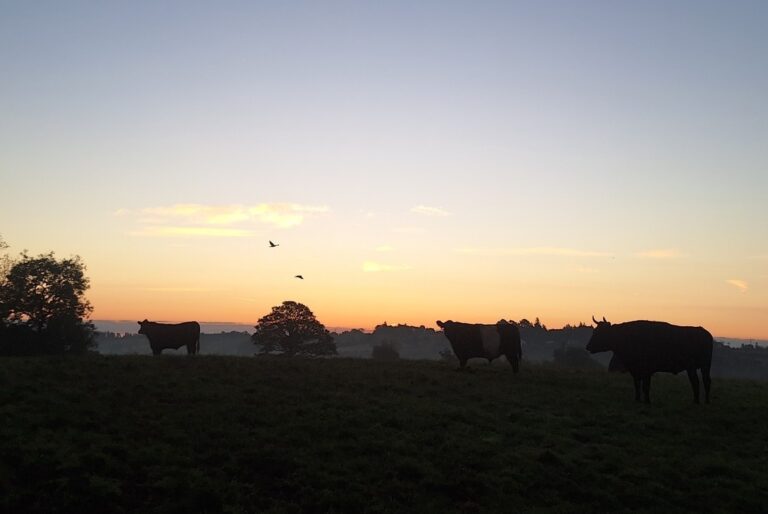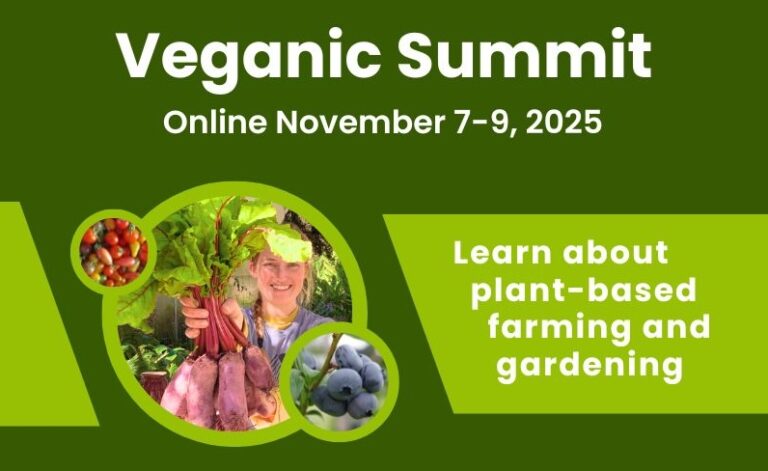Tallow, a rendered fat from the bodies of ruminant animals (primarily cows and sheep,) is experiencing a quiet resurgence. Once a staple in soap and candle making, it’s now being promoted in cooking, skincare, and wellness products, often positioned as a “natural” alternative to modern oils.
This is a curious shift, with tallow emerging from the shadows of obscurity to claim a spot among trendy cooking fats and cosmetic products. Previously considered an undesirable byproduct of the meatpacking industry, tallow is now being celebrated by influencers ranging from amateur paleo enthusiasts to gourmet chefs.
As a byproduct of the beef industry, tallow’s profitability dramatically shifts when it moves from a bulk commodity to a high-end consumer product. Instead of fetching pennies per pound for biodiesel, specialized rendered tallow (especially with a fashionable descriptor such as ‘grass-fed’) can command retail prices ranging from $6 to $15 per pound or more. This premium pricing model transforms tallow from a revenue-reducing waste product into a source of considerable profit for smaller, direct-to-consumer businesses, artisans, and boutique processors.
But tallow’s sudden, widespread resurgence raises a provocative question: Is this new food craze a genuine consumer movement? Or could the renewed interest in this inexpensive, previously marginalized material be a cunning, engineered campaign by the animal agriculture industry, designed to transform yet another waste product into a profitable and sustainable revenue stream?

What Is Tallow?
While the marketing might sound wholesome or nostalgic, the reality of what tallow is deserves closer attention.
Tallow is rendered animal fat, a tangible byproduct of the slaughter process. It is typically made from suet—the hard, dense fat surrounding the internal organs, like the kidneys, primarily of cows or sheep that have been killed for meat.
The process of rendering involves slowly heating this raw fat until the water and remaining connective tissues separate. After this “purification,” the resulting fat is known as tallow and remains solid at room temperature. The final product is one way that the animal industry keeps its business model viable: by using all parts of the carcass following an animal’s death.
Tallow’s use in food, skincare, and household goods (such as candles) dates back centuries. But so does the system that makes it possible: one that relies on the systematic breeding, killing, and dismembering of non-human animals for human consumption and convenience.
Tallow is part of an industry that treats sentient beings as raw materials. Every purchase of tallow ignores the lives that were ended prematurely for its production. To promote tallow as a “healthier” or “more natural” fat is to ignore the violence and exploitation inherent in its production. It also sends a broader message: that the lives of our fellow animals are worth less than the human desire for nostalgic or trendy ingredients.

Why Tallow?
The messaging around tallow often focuses on its “natural” and “traditional” qualities, contrasting it with what are portrayed as “highly processed” or “industrial” seed oils. But in the push to avoid processed ingredients, it’s important not to overlook the ethical cost of turning our fellow animals into products to be consumed.
Some advocates of tallow frame it as a healthier alternative to the high omega-6 content or industrial processing of seed oils. Notably, however, the promotion of tallow over vegetable oils is not without significant opposition and counter-narratives.
One often-overlooked fact is that toxins and pollutants concentrate in body fat. Just like with certain fish or dairy products, contaminants like pesticides, heavy metals, and hormone residues can accumulate in the fatty tissues of animals raised for slaughter. These substances are not neutralized during rendering, raising the question of how “healthy” tallow can really be.
In addition, major health organizations and nutrition experts, like those at the Harvard T.H. Chan School of Public Health, have raised concerns about the high saturated fat content of tallow. They argue that a diet high in saturated fat can raise LDL (“bad”) cholesterol and increase the risk of heart disease, and that unsaturated fats found in seed oils are a healthier alternative.
In addition to other concerns, the environmental impact of animal fat production is well documented. While proponents argue that using tallow aligns with a “nose-to-tail” philosophy that reduces waste, critics point out that the overall environmental footprint of the beef industry, including greenhouse gas emissions, is a major concern.
Unlike plant-based oils, tallow production is inseparable from the environmental harms of animal agriculture. Raising animals for food is resource-intensive. Vast quantities of land and water are required for grazing or feed crops. Animal farming is a major contributor to greenhouse gas emissions, particularly methane, and the runoff from farms contributes to water pollution and ecosystem degradation.

Who Is Influencing Tallow?
While the framing of tallow as a wholesome or healthy fat aligns with a broader consumer trend toward whole, minimally processed foods, and capitalizes on a growing distrust of modern food processing and large corporations, some companies that produce tallow and other animal fats are actively involved in promoting this narrative, such as Coast Packing Company and Fatworks. Advocacy groups and industry associations, such as the “Healthy Fats Coalition,” have been formed to promote the use of animal fats and directly counter negative perceptions.
The Healthy Fats Coalition is not a grassroots movement but rather a calculated effort to rebrand and promote a specific product—animal fats—in a health-conscious market:
Formation and Leadership
The coalition was founded and is led by key players in the animal fat industry. Coast Packing Company, one of the largest suppliers of animal fat shortenings in the Western U.S., took the lead in its formation. This direct link to a commercial interest is significant, as it shows the primary motivation is to increase the market for their products.
Mission and Messaging
The stated mission of the Healthy Fats Coalition is to “affirm that animal fats deserve a central place in the US diet and in the popular imagination.” Their messaging is carefully crafted to:
◦ Frame Animal Fats as “Healthy” and “Traditional”: They argue that fats like tallow and lard have been “demonized for too long” and have “tangible health benefits.” This taps into a consumer desire for traditional, “real” foods and a distrust of modern, highly processed products.
◦ Portray Seed Oils as Unhealthy and Industrial: A core part of their strategy is to create a negative contrast. They characterize seed oils as “artificial/manufactured substitutes” that are “far worse than originally believed,” often referencing books like Nina Teicholz’s The Big Fat Surprise to lend a veneer of scientific authority to their claims.
Membership and Affiliations
The coalition builds its credibility by aligning with other organizations and individuals who share its viewpoint. Founding supporters have included the Weston A. Price Foundation, a prominent nutrition education group that advocates for a diet based on ancestral traditions and animal fats, as well as companies like Fatworks and HeartBrand Beef. By including these groups, the coalition creates the appearance of a broader, more diverse movement than just a single company’s marketing effort.
Tactics and Strategy
The Healthy Fats Coalition’s approach is not based on direct advertising of a specific brand. Instead, they focus on a more subtle form of influence through “educational initiatives.” They ask supporters to display the coalition’s badge on their websites and social media channels to amplify the message. This creates a network of endorsements that reinforces their narrative and normalizes the use of animal fats. This strategy is similar to lobbying efforts, but instead of focusing on legislation, it targets consumer opinion directly.
The formation and operation of groups like the Healthy Fats Coalition reveal a sophisticated and multi-pronged strategy. They aim to shift public opinion by framing a commercial product as a health and wellness solution, building alliances with like-minded organizations, and creating an educational narrative that contrasts their product favorably with a widely used competitor. This is a clear case of an industry actively seeking to influence a market trend for its own economic benefit.

Where Tallow Hides
Tallow often appears in products that people use daily, sometimes without realizing it. It may be labeled vaguely, making it harder for consumers to avoid unless they know what to look for, so be sure to give your ingredients a closer look.
The names given to tallow that might be misleading to consumers, especially on ingredient labels, are often chemical or technical names derived from animal fat. These terms can obscure the fact that the ingredient originates from the animal industry.
Here are the most common names:
• Animal Fat: This is the most general and common euphemism, which is simply a generic classification.
• Sodium Tallowate: This is the chemical name for a soap ingredient derived from the reaction of caustic soda (sodium hydroxide) with tallow. It is widely used in bar soaps and cleansers.
• Tallow Acid or Tallow Fatty Acid: This term refers to the mixture of fatty acids (primarily stearic acid and oleic acid) extracted from tallow.
• Stearic Acid (or Stearate Compounds): While stearic acid can be plant-derived (e.g., from cocoa butter or coconut oil), it is also a major component of tallow. Unless specifically labeled “vegetable-derived,” its presence may indicate the use of animal fat.
• Oleic Acid: Similar to stearic acid, this fatty acid is a major component of tallow but can also be plant-derived (e.g., from olive oil).
• Glycerin or Glycerol (sometimes listed as E422 in foods): Glycerin is a byproduct of the process used to make soap or biodiesel from animal fat (tallow) or vegetable oil. It is often derived from animal sources unless specified as “vegetable glycerin.”
• Suet: The technical name for the specific raw fat that tallow is rendered from.
Common uses for these forms of tallow include:
• Bar soap
• Lip balms, lotions, and moisturizers
• Candles
• Deodorants and detergents
• Processed foods, especially baked goods or frying fats

Plant-Based Alternatives
Fortunately, there are entirely animal-free fats and oils that are nourishing, wholesome, and versatile. These options do not require the suffering or death of any non-human being and can often be produced with a lower environmental impact.
All of these can be sourced ethically and organically:
Cold-Pressed Coconut Oil
• Naturally solid at room temperature — a great replacement for tallow in texture
• Widely used in vegan baking and skincare
Cocoa Butter & Shea Butter
• Deeply moisturizing, ideal for lip balms and lotions
• Used in ethical, plant-based cosmetic lines
Avocado Oil
• Nutrient-dense, high smoke point, and gentle on skin
• Suitable for frying, roasting, and personal care
Extra Virgin Olive Oil
• Rich in antioxidants and monounsaturated fats
• Excellent for cooking, dressings, and skincare

Tallow may be making a comeback, but that doesn’t mean it belongs in a future focused on sustainability, and respect for all life. There is nothing “natural” about exploiting and killing our fellow animals for the fat in their bodies, especially when there are abundant, effective, and ethical plant-based alternatives available.
Choosing not to support products that contain tallow is a small but meaningful step toward a more just and humane world, where no living being has to suffer for the sake of trend or tradition.













